4 years with robots brings whole system benefits
The installation of DeLaval VMS V300 robots in 2019 paved the way for David Luxton and his family to realise system benefits throughout the farm by managing fixed costs more efficiently and focusing on generating more milk with lower operating costs.
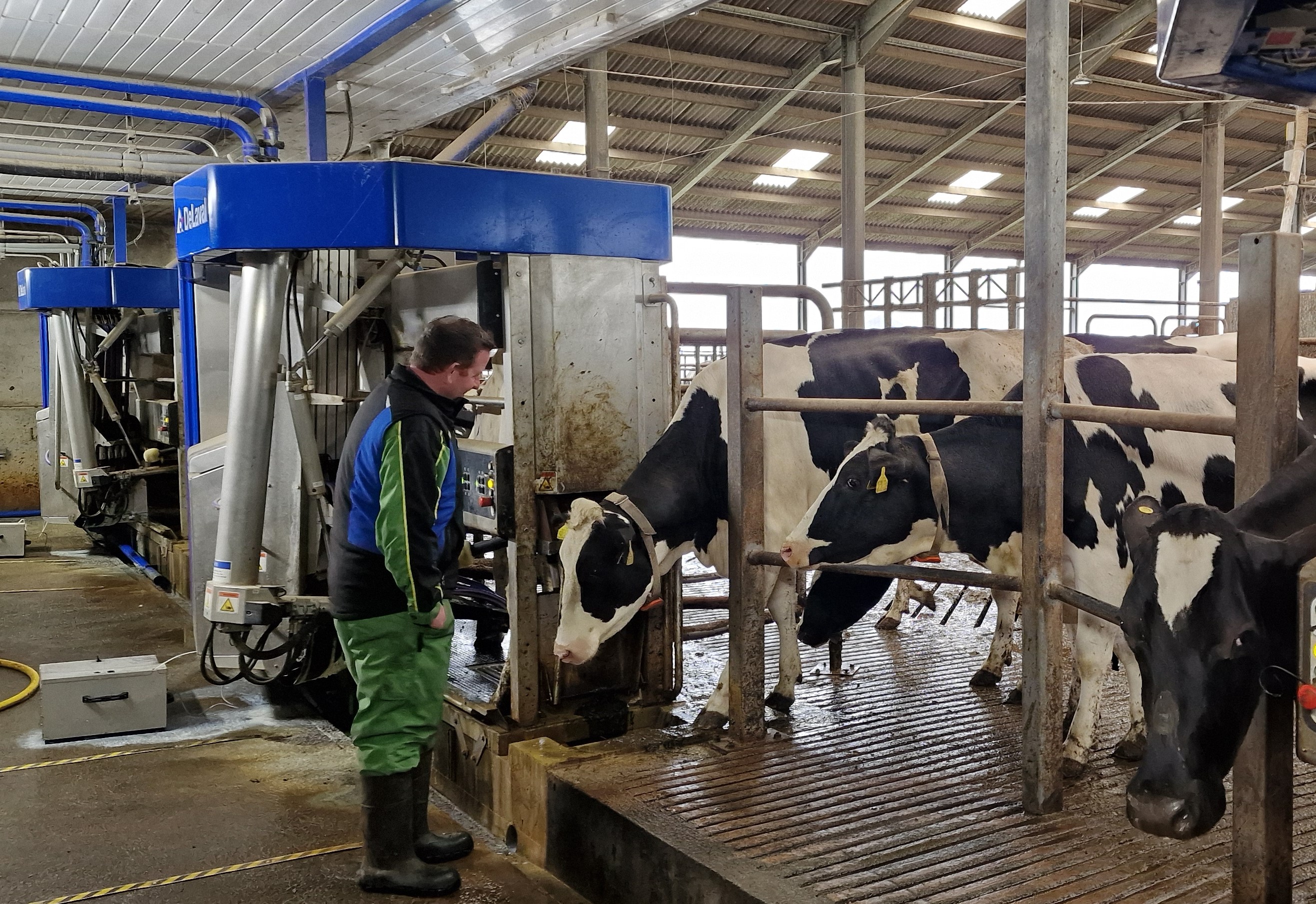
Newlands Farm is owned by Robert and Elizabeth Haworth. Their daughter Sarah manages the farm with her partner David Luxton and in 2019 the farm chose to switch from milking through a herringbone parlour to three robots.
“We have maintained the herd size and, rather than grow, we have chosen to use the robots to enable us to manage our time and costs. We have 180 in milk, 200 in the herd and 200 followers, which suits the 270 acres we farm,” says Mr Luxton.
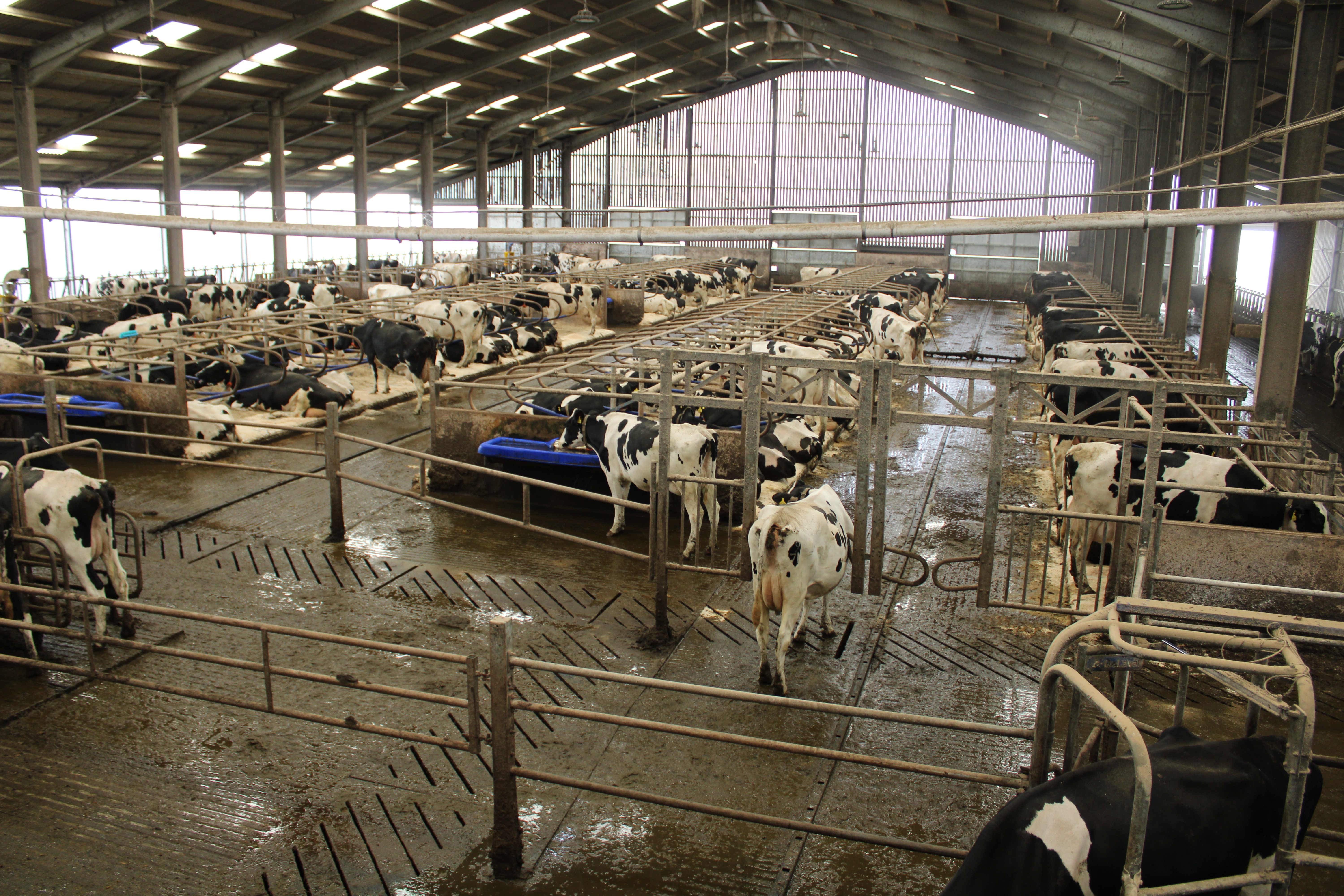
He explains that by choosing DeLaval’s service plan he has been able to work with dealer Daw Refrigeration to provide the robots with all the consumables and chemicals needed.
“The service plan means we only pay labour and parts over £75. Liners, teat dip and other consumable items are all taken care of, which has freed me up to manage other areas of the farm,” he says.
His aim has been to manage the fixed costs of the business to prevent any unplanned expense. This has included changing the farm’s main tractor and telehandler to a permanent hire agreement.
“I’m not an engineer or a mechanic, nor do I have any experience with robotics. I see my role as farm manager, making sure that everyone and everything involved is working as it should so I can focus on driving milk yield efficiency,” he says.
And this is where the robots have provided the farm with significant gains. Average milkings have risen from to 2.7 and the robots are taking 11,500 litres per cow per year, which has increased from 10,000 litres when the robots were first installed in 2019.
“The increase in yield is a mixture of the cows milking well through the robots and the improvements we have made to genetics, forage management and reducing the time the cows spend at the robot,” he says.
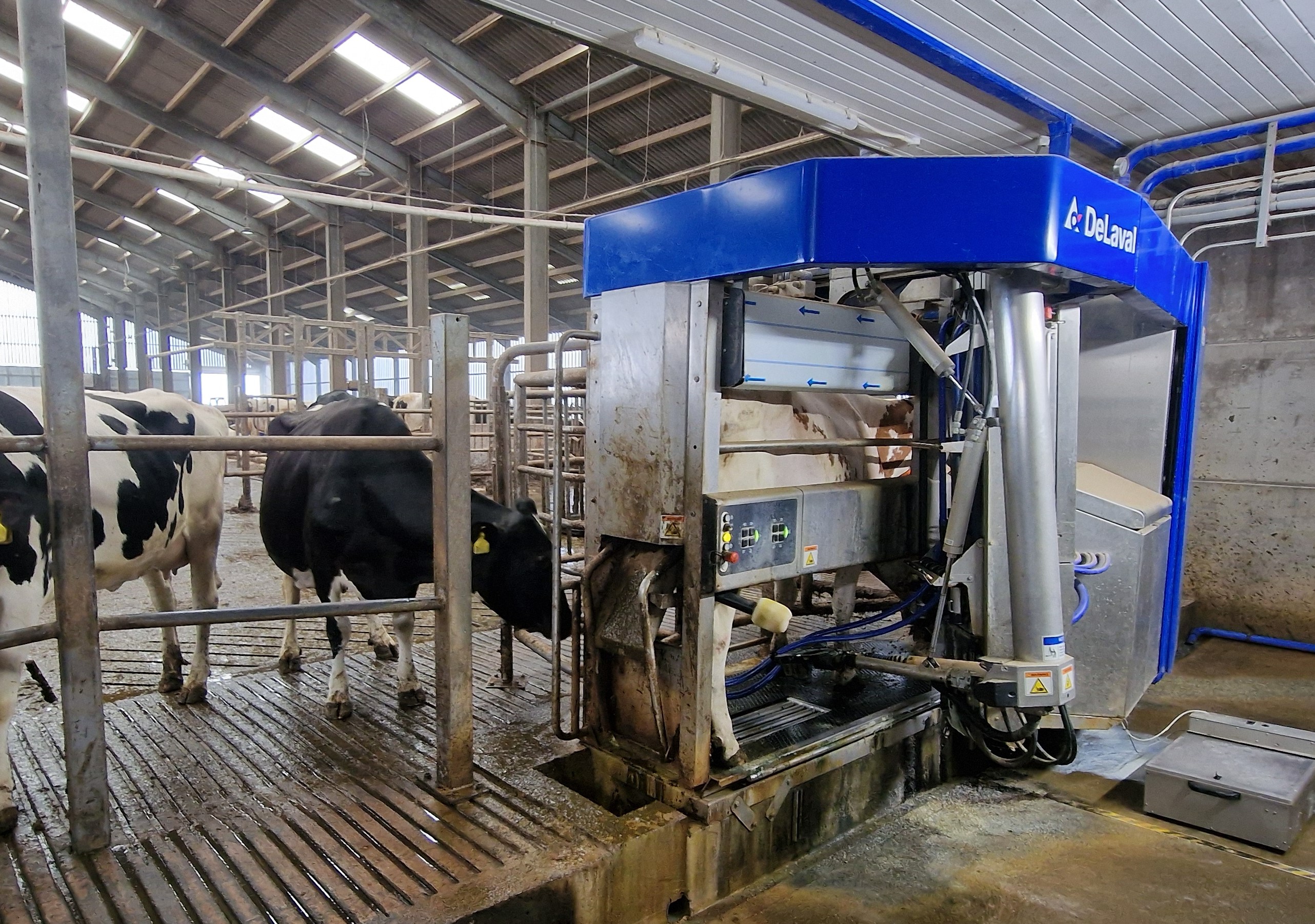
The herd is housed and calved all year round. The farm has moved to pedigree classification and is selling in-calf heifers as an additional income. Working with Cogent to accelerate genomic gain, Mr Luxton is selecting cows with characteristics best suited to robots.
“We want to speed up box (robot) time, so we have been breeding cows with udders that are better suited to the robots. This is an ongoing process and one that is having consistent benefits. By milking the cows through the robots faster, whilst maximising yield, we are increasing what each of the three robots can yield,” he explains.
The robots are realising 2,000 litres per robot per day. However, he believes this could rise to 2,200 or 2,300 as adjustments are made. He suggests that some cows seek to be milked too often and take up valuable robot time as each needs to be prepared to milk and sometimes is not giving sufficient milk per visit.
“Number of visits is less important to us than the yield achieved from each visit, because we are trying to maximise milk from the three robots we have. By changing permissions and reducing the time each cow spends at the robots, we can milk more cows. This is all extra milk for the same overhead, we are just getting the cows through the robots faster to provide more time for additional cows to be milked,” he says.
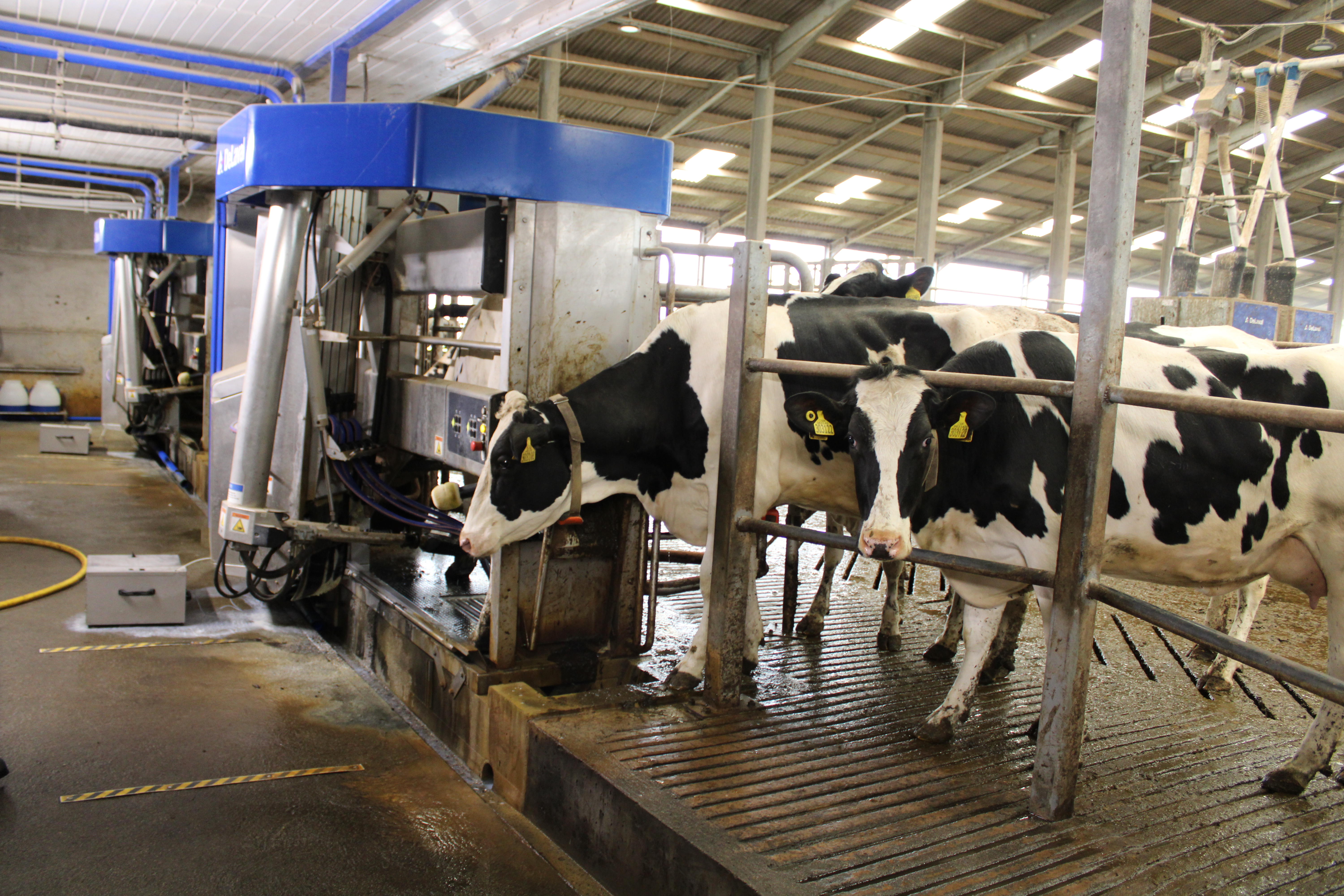
By having all the cows housed, the farm has fixed the system and its costs in a consistent and constant cycle. This has helped manage staff and control costs.
“We employ Sally, Nathan and Lily to help us, and their tasks have become more structured into a routine that is helping us to achieve more across the farm. The seasonal constraints associated with a grazing system are no longer a concern and we can concentrate on managing our forage to improve milk yields and lower our concentrate costs,” he says.
The farm operates a multi-cut system, taking five cuts each year along with homegrown maize.
“We are maximising our grassland and working with an agronomist to improve our maize yield. Before the robots I struggled to plan and make the most of the weather windows because milking took so much time. Now I can follow the weather and take grass when it is at its best,” he says.
He considers grazing inefficient, suggesting that too much ground is lost to damage and the cows rarely take the full amount of forage on offer. He has also begun to follow a reseeding strategy to improve the grass yield. This has included looking into SFI options to realise payments for incorporating herbal leys.
“I attended countless meetings about SFI incentives and came away concerned about the impact on the farm,” he says.
He explains that, with the grassland system the farm operates, he knows what the cows are yielding and that there was no suggestion that this would improve sufficiently to cover the uncertainty of moving significant portions of land to an SFI scheme.
“We are working on a long-term strategy to maximise the productivity of the farm without increasing the herd size. Risking our highly productive grassland by planting herbal leys for SFI payments could jeopardise our forage quality and our milk yields. It is something we are considering, but we will be cautious with our commitment,” he says.
Calculating margins and making decisions in this way was not a luxury the farm could afford prior to the robots. Mr Luxton is now in a position to weigh up any change to the system and ensure it has a sustainable and positive effect.
“I have friends with herds five times ours and I have been taking a lead from larger farms to apply their strategy to our farm. We have also become an AHDB strategic dairy farm, part of a group of about 20 throughout the UK. By bringing industry leaders to the farm, we have been able to learn from them and the others in the group,” he adds.
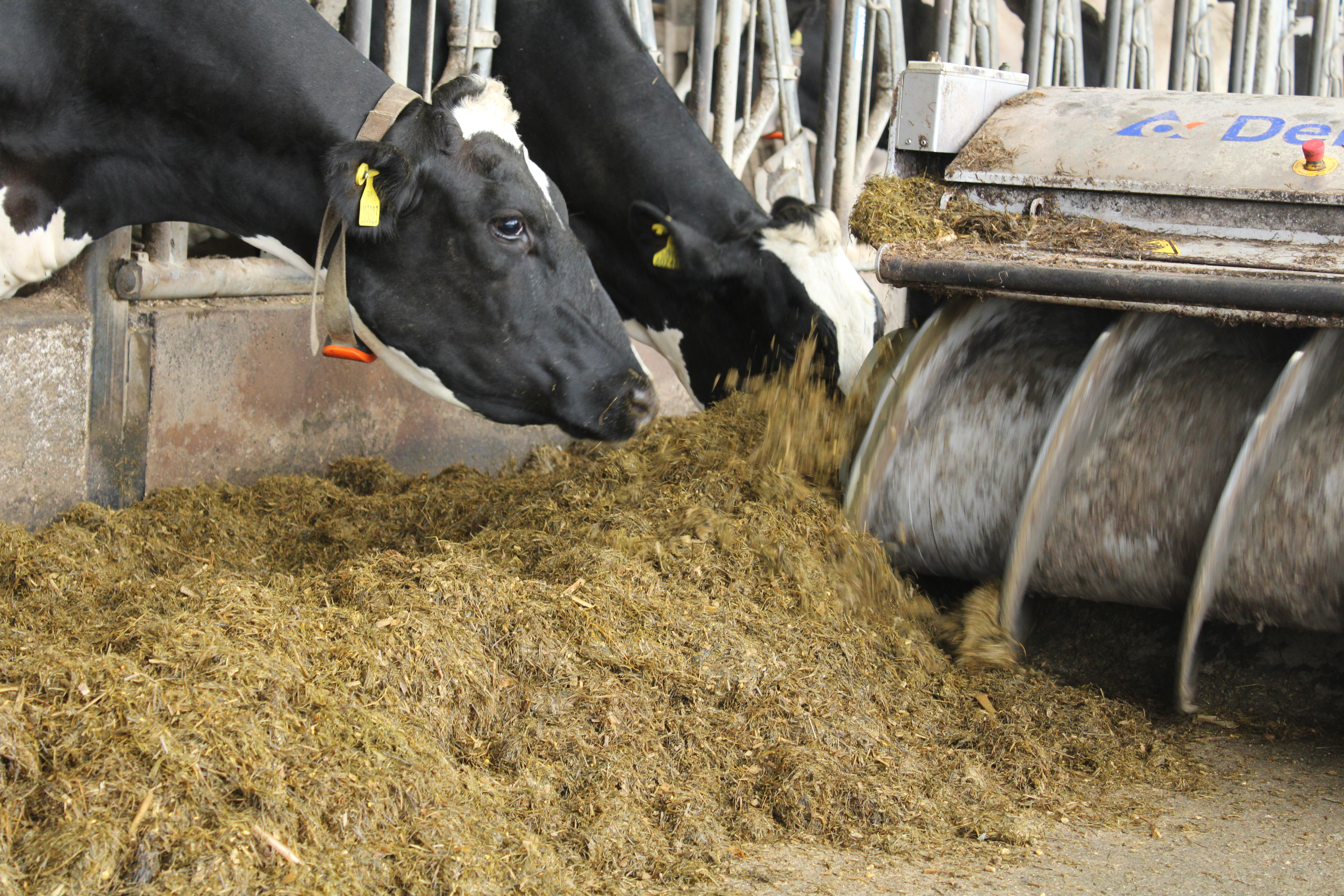
He suggests the farm’s goal is to milk 200 cows as efficiently as possible. There is little desire to increase the land being farmed or the buildings needed to house more cows. For Mr Luxton it is not about improving income through growth, but instead by efficiency.
“Modern farming is forcing system changes. One way is to grow and increase overall farm income, but we have chosen to focus on profit. By focusing on milk production we have been able to see gains in yield whilst better managing our costs,” he says.
He concedes that his own role on the farm has changed considerably to facilitate the change and sees himself now as a manager rather than a milker. The list of outside help is considerable, with Cogent, Penbode Vets, Daw Refrigeration, Excel Agri nutritionists and agricultural contractor Moores of Froxton, all on board to help make improvements. However, Mr Luxton has welcomed this working arrangement.
“We have created business relationships to improve efficiencies and these need to be managed carefully to make sure everyone involved is working together for the good of the farm and the productivity of the herd. In doing so we have seen uplift in milk whilst carefully managing our costs,” he says.
By freeing up time, Mr Luxton is also able to bring in an additional income by working with Moores of Froxton as a tractor operator. This makes the machinery overhead more efficient and provides the farm with newer machines that reduce operating costs.
“By fixing as many costs throughout the farm as possible, and concentrating on making incremental improvements to each, we are saving time and money whilst helping the cows to produce more milk. It has been a switch from milking cows to managing whole farm productivity and it has improved the business and our quality of life,” he concludes.
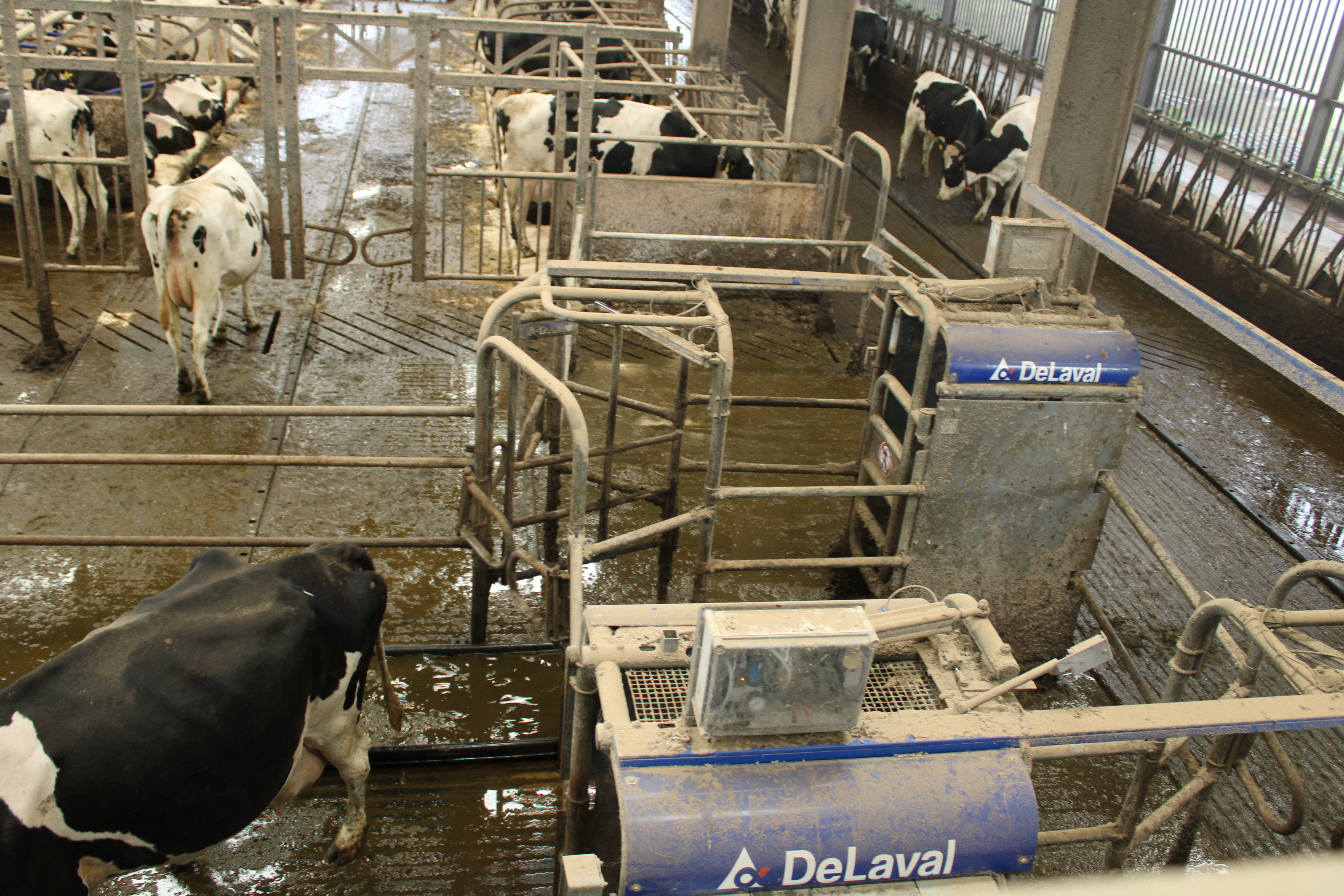
For more information on DeLaval VMS V300 milking robots, click here.